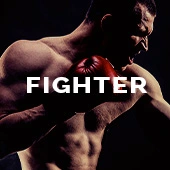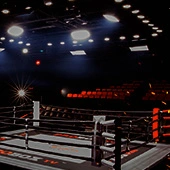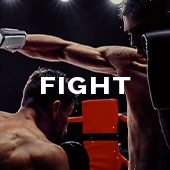by David P. Greisman
There is no column in the statistics set aside for moral victories. That doesn’t change the reality of such a result. Sometimes a fighter indeed will win in the way that he lost, much in the same way a boxer can lose in the way he won.
What matters most are the circumstances of the story and how well they sell a sequel.
It’s not just true in the realm of fictional fisticuffs, when Rocky Balboa made the most of losing to Apollo Creed and Sylvester Stallone made the most money possible afterward because of it.
It’s also true in this occasionally unreal world of the Sweet Science, in which Julio Cesar Chavez Jr. can lose all but the last of 12 rounds with Sergio Martinez — and in which Martinez can dominate Chavez for 11 rounds but barely escape the victory — and both can come out looking optimistically toward what’s next.
There will be imperfect comparisons to similar scenarios, such as how Librado Andrade had pursued Lucian Bute for 11, pummeled him in the 12th and then floored him in the final seconds, only for Bute to survive controversially with the decision victory. And there will be other comparisons that are reminiscent but in which the roles are reversed, such as how Billy Conn was beating heavyweight champion Joe Louis through 12 but got knocked out in the 13th, and how Chavez’s namesake father had famously and dramatically come from behind to stop Meldrick Taylor in the final seconds of the final round.
In each, the question became one of what could have been, of whether one change could make the difference in who won and who lost.
That is the question being asked of this past Saturday’s fight between Martinez and Chavez Jr., which Martinez won by unanimous decision by tallies of 118-109 on two judges’ scorecards and 117-110 on the third. Those scores depict a clear victory for Martinez and reflect the extra point Martinez lost for being knocked down in the last stanza — a point at which Martinez nearly lost a fight that had otherwise been in his hands until then.
Chavez had been struggling the entire night with Martinez’s movement and activity, never letting his hands go as much as he needed to. He needed to break Martinez down with pressure in order to beat him with power, but he wasn’t throwing enough and was landing even less.
But with a minute and 45 seconds to go in the fight, Chavez landed a shot that he and his team had discussed in training camp, catching Martinez pulling straight back with his hands down, nailing him with a right hand to the head. Chavez is an outsized middleweight who is on the verge of outgrowing his division, while Martinez has always seemed on the smaller end in the weight class. The punch hurt the tiring Martinez, as did the follow-up hooks from Chavez.
Chavez backed Martinez to the ropes, and with half of the round remaining, he landed a left hook that left Martinez’s legs splaying and his body teetering. The follow-up shots put Martinez down, and he had to crawl on all fours and grab the ropes to right himself and beat the count.
With 70 seconds left, Martinez didn’t hold but rather stood and sometimes traded in front of Chavez, taking heavy punch after heavy punch in return. Martinez sustained them and survived the remainder of the round. The crowd roared at what it had just seen — not necessarily that Martinez had escaped triumphant, but rather at what had nearly been.
That is why there are now many more clamoring for a rematch than there would have been had Chavez’s greatest moment of the fight, and Martinez’s worst, happened at a different time.
Shane Mosley had similarly brought fans to their feet when he wobbled Floyd Mayweather Jr. in the second round of their 2010 fight. But as dramatic as that moment was, the effect was fleeting; Mayweather recovered and went on to dominate the remainder of the bout.
Saturday’s fight might have gone differently had Chavez hurt Martinez earlier. Yet for all the speculation about what might have happened and whether Martinez would have been able to do what Mayweather did against Mosley, there is the simple reality that Chavez didn’t get to Martinez earlier because he couldn’t.
He couldn’t this time, at least. Perhaps he could next time, however. Or perhaps Martinez, who went to the hospital with what was reported as a broken left hand, torn ligaments in his right knee and bloodied from wounds on his face and head, would perform even better in the sequel.
Andrade got his rematch against Bute a year after they first met. This time, Bute won emphatically, knocking him down twice and keeping him down for the count the second time with a perfectly placed body shot. Due to World War II, Conn had to wait five years for a non-exhibition rematch with Louis. This time, Louis won emphatically, knocking Conn out in the eighth. And Taylor had a rematch with the elder Chavez four and a half years after their first installment. This time, Chavez ended it earlier, stopping Taylor in the eighth.
It’s not just about the story of Martinez-Chavez, though, and the unanswered questions that came out of its conclusion. It’s also about the money.
The sensational 12th round will remain more memorable to those who watched than the one-sided boxing match from the previous 11 rounds. Both fighters would have preferred the fight to end differently; Martinez would want to exit unscathed, while Chavez would have been better off still undefeated and the new, undisputed champion.
There is more money in their rematch than in nearly any other possible fight out there for them. There is reason for fans to tune in, reason for Chavez to think he will win and reason for Martinez to think he will win more easily.
For 11 rounds, Sergio Martinez showed why he has been the true middleweight champion. In the 12th, Chavez showed just how close he was — and perhaps how close he still will be — to taking that title away from him.
The 10 Count
1. That Didn’t Take Long:
Last week, I wondered when a few fights would be announced —the bouts for a Nov. 10 card that had initially been set aside for Manny Pacquiao’s next appearance, and the Dec. 8 date that had since become the day on which Pacquiao would face, well, someone.
Those fights needed to be announced soon, I noted, because the amount of time for the fighters to prepare and for the promoters to promote was dwindling with each passing week.
Well, Manny Pacquiao is now officially facing Juan Manuel Marquez for the fourth time, with their pay-per-view set for Dec. 8. This gives about 12 weeks for Pacquiao and Marquez to get ready, which is more than enough time.
The Nov. 10 card, meanwhile, looks like it’ll have a doubleheader featuring featherweights Orlando Salido vs. Mikey Garcia in one bout and Vanes Martirosyan vs. Erislandy Lara in the other. (according to a report from BoxingScene’s own Rick Reeno).
While that card is barely two months out (or less), both of those bouts have essentially been set for some time, just without an official date. The fighters should be in the early stages of camp already.
2. What an eventful week in the news for Manny Pacquiao, in terms of both boxing and business:
There was the announcement that he’ll be fighting Juan Manuel Marquez, who gets a shot for the fourth time.
And there was the report that he could be entering a promotional venture with 50 Cent, who got shot nine times…
3. Pacquiao facing Marquez yet again leaves Timothy Bradley in need of a date, in both senses of the term.
Last week, the aforementioned Arum told members of the media that Bradley likely would return on Dec. 15. Per a report from this website’s Ryan Maquiñana, the venue that had initially been in mind was The Theatre at Madison Square Garden, though it’s not available. And Bradley’s manager, Cameron Dunkin, said that Ruslan Provodnikov was one of a trio of approved foes. HBO, however, had turned down Zab Judah as an opponent, the report said.
I’d rather see Bradley face a New Yorker like Judah if the fight is still to end up in New York. Alas, who Bradley will face and where he’ll face him remains up in the air, which is quite the reward for a man who was awarded a decision over Manny Pacquiao earlier this year.
4. All of our talk about the competing cards in Las Vegas — including how one card had a great main event but an uninspiring undercard, while the other card had a great undercard but an uninspiring main event — might just not have mattered.
Golden Boy Promotions said last week that the Canelo Alvarez-Josesito Lopez card at the MGM Grand had sold out. Top Rank, meanwhile, also said last week that it had sold out the Thomas and Mack Center for Sergio Martinez-Julio Cesar Chavez Jr., setting an attendance record for that venue that just eked out the previous record holder of Lennox Lewis-Evander Holyfield 2.
It remains to be seen what the actual statistics will be. But even if the promoters are slightly exaggerating, this game of promotional chicken that went on over promoting big cards featuring major Mexican fighters on the same day in the same city will have been worth it.
The Mexican Independence Day weekend has become a traditional day for boxing’s biggest cards, and from the sound of it the Mexican and Mexican-American faithful turned out in droves to see two of its biggest young stars in Las Vegas.
It’s still a shame that they had to pick. But it’s also not surprising that neither promoter wanted to blink.
5. Credit is due both to HBO and Showtime for not giving in to the competitive urge to spoil the results of the other network’s broadcast.
While ticket sales were reported to be phenomenal for the live Las Vegas cards, having competing broadcasts was less than ideal — the HBO pay-per-view probably saw fewer buys than it would have had there not been a “free” quadrupleheader on at the same time on Showtime, while the Showtime card’s live ratings likely suffered as boxing fans tuned in to the big show.
Viewers had already made their choices, though, and ruining the results on the other network wouldn’t change those decisions, nor would it do the networks any good. Good for them, then, for resisting whatever temptation there might’ve been, if any.
6. I wouldn’t be surprised if we see Canelo Alvarez and Floyd Mayweather Jr. sharing a pay-per-view next year — or perhaps two.
Alvarez, who as expected topped a game but overmatched Josesito Lopez on Showtime’s card on Saturday, has fought just twice this year: once on Cinco de Mayo, and once on Mexican Independence Day weekend.
He’d fought much more often in previous years: four times in 2011, five times in 2010, seven times in 2009, and eight times in 2008. Given the way the rest of 2012 is shaking out, however, I don’t imagine he’ll be back in this calendar year, even though he came out of the Lopez bout unscathed.
Here’s my wholly uninformed guess: Barring a keep-busy fight in, say, January, we might not see Alvarez back until May. While it’d be a big fight for him to face Mayweather on a pay-per-view coinciding with Cinco de Mayo weekend — a date both men have fought in several times in recent years — it’d be even bigger if they faced separate opponents on the card and built up to facing each other on Mexican Independence Day Weekend 2013 (both men also have fought on that weekend in recent years).
7. It’s hard to blame Ricky Hatton for coming back after nearly three and a half years out of the ring, dating back to May 2009 and his being on the losing end of the knockout of the year against Manny Pacquiao.
“It’s all about me redeeming myself,” Hatton was quoted as saying last week by Kevin Francis of The Daily Star. “I don’t want my children remembering me as a champion whose life turned to shit. … I want them to remember me as a fighter who came back and did himself proud … I became so depressed after Pacquiao, because I thought I let my fans down, I felt I let myself down, I felt let my family and kids down.”
Rare is the athlete who retires at the right time, and rare is the athlete who is ready for retirement, particularly after dedicating a majority of his life to his sport. It’s no surprise that Hatton had difficulty adjusting to a life without fighting, and that drinking and drugs and depression took over. It’s also no surprise that he doesn’t want his final memory in the ring — and the final memory of him in the ring — being him out cold and on his back.
But if ever there was a sign that Hatton’s time at the top of the sport was over, it was the Pacquiao loss. There’s no shame in losing to one of the best fighters, pound-for-pound. Now, though, he’ll need to decide whether he’ll be content facing the second and third
tiers of opponents, and even if he can still compete with those foes after being away for so long.
His first bout back will be Nov. 24.
He’s always been the kind of fighter who’s taken a lot of shots to land his own. He needs to be conscious of just how many more shots he should take — and how many title shots he believes he can have.
8. For those wondering about the claims that Chad Dawson began to have difficulty making the super middleweight limit weeks out from his fight against Andre Ward, there’s this information from the World Boxing Council, which mandates additional weigh-ins 30 days and 7 days before title bouts.
With 30 days out, Dawson weighed in at 181 pounds, which was within the 10 percent limit set by the WBC. That number was certified by Keith Kizer of the Nevada State Athletic Commission, according to information the WBC provided to BoxingScene.com.
But Dawson did not have a 7-day weight provided to the WBC, according to William Boodhoo, an official with the sanctioning body.
(Ward, meanwhile, was a reported 179.6 pounds at the 30-day weigh-in, and 172 pounds at the 7-day weigh-in).
9. Boxers Behaving Badly update: Retired two-division world titleholder Vinny Pazienza won’t be spending any time behind bars after an alleged scuffle with two women at a Rhode Island bar.
Pazienza, 49, has instead been sentenced to 30 hours of community service and also must undergo alcohol counseling after pleading no contest Monday to one count of disorderly conduct, according to The Associated Press. Prosecutors dropped one count of simple assault, the report said.
The alleged incident happened in July at a bar/restaurant, according to a Providence Journal report at the time. Pazienza had been accused of grabbing one woman’s breast, which led to the two yelling at each other, causing the woman’s friend to get involved. That second woman accused Pazienza of hitting her in the throat, grabbing her hair and throwing her to the floor. Pazienza, meanwhile, told police that “he grabbed [the second woman’s wrists] until she released him, then she fell,” according to the newspaper.
Pazienza held world titles at lightweight and junior middleweight, and also challenged for belts at junior welterweight and super middleweight. He last fought in 2004, ending his two-decade career on a win that brought his record to 50-10 with 30 knockouts.
10. That wasn’t actually guy in a crazy skull costume waving the Mexican flag behind the fighters during the Showtime broadcast.
That was Larry Merchant without his makeup…
“Fighting Words" appears every Monday on BoxingScene.com. David P. Greisman is a member of the Boxing Writers Association of America. Follow David on Twitter at @fightingwords2 or send questions and comments to fightingwords1@gmail.com



